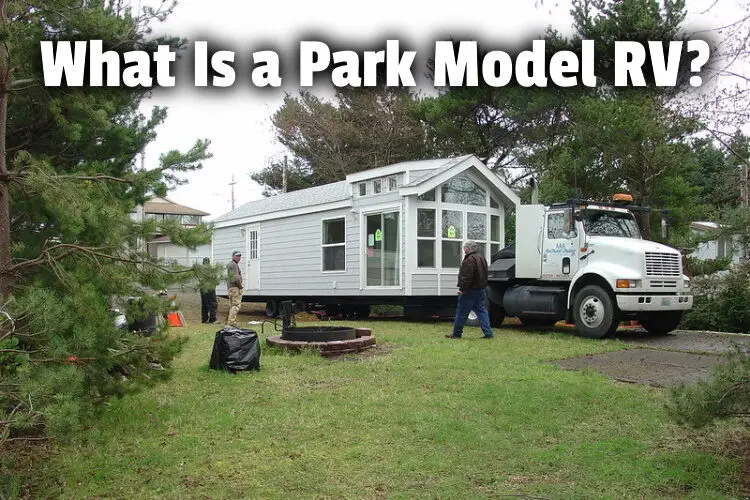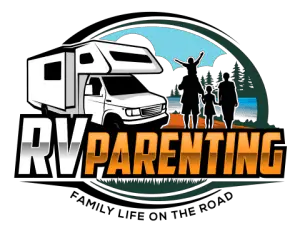Choosing the right RV can be a bit of a challenge because there are so many types to choose from. Most people are familiar with popular RVs, but park models are not well-known. So, what is a park model RV?
Park Model RVs are trailer-type tiny homes that are designed for long-term residency. While it’s possible to use them for camping, seasonal travel, and recreation, they are most often kept in a particular location for a long time, like a mobile home. Like a mobile home, they require professionals to move it.
On the other hand, most other RVs are manufactured to be on the go.
Park models are spacious, have a lot of amenities, and can be connected to city utilities. As I mentioned, they are like a mobile home, but there are some key differences we’ll get into below.
They are recreational vehicles (even though they look like tiny homes) because they can be transported or towed, placed where you’d use them for a long time, or you could keep them at an RV park for an extended period.
In this article, we’ll check out riveting facts around what makes park models unique and how you can make good use of them.
Let the fun begin…

What is the difference between an RV and a park model?
The key difference between park models and the more traditional types of RVs is the fact that park models are designed to be kept in a particular location for a much longer time, and require professionals to move it. The term RV is a generic term. It includes park models and all other types of RVs.
The traditional RV, on the other hand, is manufactured to be more mobile. In other words, park models are less mobile, seeing as they are usually parked for a long duration.
They are towed to the campground or RV park, and there are some permanent fixtures added. And yet, you can decide to take them to another location after some time.
Another key difference is that park models typically have more space than any other RV type.
They are “mobile homes” meant for temporary accommodation. So, they have a lot of amenities and are usually hooked up to the utilities at the ground where they are parked.
The design is another difference.
They look like homes with peaked roofs and porches and balconies in some cases. Even though they are RVs, they have the look and feel of a home.
They’re unlike tiny homes because tiny homes are stationary structures and are not as alluring and equipped as park models. Tiny homes do not also have governmental standards builders are expected to adhere to, while park models are built according to the same standards for RVs.
Say you’re thinking of a Class A motorhome or a travel trailer, which one’s better?
Luckily, that’s what I explored in a recent article of mine. I said that Class A Motorhomes are great for families who travel often, while travel trailers are good for smaller families who do weekend getaways.
Just click the link to read it on my site.
RV Park Model rentals, cottages and cabins are one of the biggest trends in the RV Industry inviting outdoor enthusiasts an alternative way to enjoying great outdoor living! pic.twitter.com/08S0LFy2jn
— RV Points (@RVpoints) May 13, 2018
What makes an RV a park model?
Park model RVs, unlike other RVs, are designed to be used as living quarters and look more like a tiny home. They often have porches and may not have a flat roof. They are not driven often but parked and connected semi-permanently to utilities.
In fact, in some cases, once they are towed to a location, they remain there, or they are towed off at the end of the season.
Other RVs are a lot more mobile and can be driven off at will. Park model RVs look like small homes that you may have passed a couple of without knowing they aren’t houses. And you for sure probably didn’t realize they were RVs.
Like regular RVs, they are built on a single chassis and mounted on wheels, but they are never more than 400 square feet.
They are very spacious, compared to regular RVs. They come equipped, and most are also 100 turnkeys. So, they are highly comfy. The key differentiator between them and regular RVs is the length of time they are parked in one spot.
Regular RVs are made to be on the go, not parked for a considerable length of time.
So you’d like to live in an RV? That’s exactly what I wrote about in a recent article of mine where I explained that it’s best to get yourself a Class A for traveling and a fifth wheel for longer stays at campgrounds. And to plan to buy a new one in January or a late model that is 1-2 years old.
Just click the link to read it on my site.
Glamping Summit/USA welcomes @CavcoRV as an exhibitor. They are the national leader in design, manufacturing and distribution of Park Model and Cabin RV’s throughout the U.S #glamping #luxurycamping #glampingbizusa pic.twitter.com/G0PZ87ZoCT
— The Glamping Show USA (@glampingshowusa) July 23, 2019
Is a park model considered a tiny home or a mobile home?
Park models are different from tiny homes or mobile homes. Tiny homes and mobile homes are homes meant to be lived in permanently. Park models are RVs that are used for long-term stays at camps and RV parks.
So all 3 are similar and different at the same time.
Naturally, all 3 can be towed to other locations. Park models look like homes and have the amenities and can be connected to city utilities, but they are vehicles, not homes.
Manufactured mobile homes and tiny homes are often moved to and kept at a location permanently.
It’s not that mobile homes can’t be moved. They can. But, because most have permanent masonry foundations, it’s hard and expensive to move them.
RVs, on the other hand, are moved around often, but park models, not so much. All RVs and mobile homes are built to specific standards, while tiny homes are not.
Any RV, camper, or trailer cannot be a tiny home or a mobile home. It’s vital to also note that RVs are insured as vehicles, while a mobile home is insured as real estate. In summary, park models RVs are kind of a mix of a tiny house, a manufactured home, and an RV.
Say you’re thinking of a Class A motorhome or a travel trailer, which one’s better?
Luckily, that’s what I explored in a recent article of mine. I said that Class A Motorhomes are great for families who travel often, while travel trailers are good for smaller families who do weekend getaways.
Just click the link to read it on my site.
the tiny house hotel section of our tiny house community is almost ready for visitors! here’s one of the models you’ll be able to stay in🌿
“Tumbleweed” 1 bed/1 bath 399 sq foot RV park model tiny house with 2 porches & loft. pic.twitter.com/klWvpnZRIA
— R a c h L✨ (@rachellinger_12) September 1, 2020
Can you live in a park model RV?
It is possible to live full-time in a park model RV. But park models are not built for full-time living since they are technically recreational vehicles. Therefore, they are not built to the same standards as a home constructed on-site or manufactured mobile home.
Park models are vehicles, while the latter are homes. They are also financed differently.
Park models are ideal for camping, long stays at RV parks, and seasonal getaways. But as awesome as they are, they are not designed for full-time living. They’re usually parked at RV resorts for some length of time.
This is not to say that you can’t live in them. You can, especially seeing as most are equipped with amenities, and they can be hooked up to city utilities.
If you’d like to live in them full-time, you’d want to find out if the resort allows that, you’d have to consider the rent, and you may have to winterize it when the season changes.
Alternatively, if the laws of the state you reside in permits it, you could simply buy a small plot of land, park your park model there, and live there full time. Some tiny house communities use park models that folks can live in. Most are great for seniors, singles, and single mothers.
You’ve heard of Class B RVs, right? Are you wondering if they’re worth it?
That’s what I addressed in a recent article of mine. In it, I showed that because of their small size, they are great if you have no plan to live full time in them and only plan to travel with 1-2 people at a time.
Just click the link to read it on my site.
Field trip to Stone Canyon Cabins to see how RV Park Model homes are made. Now it time for our Building Construction Students from LHS/MHS/TCCHS to start building their own! @wyoder0 @akeith4ua @ghilltide @TCBOE @S_Taylor_2016 @tim_gallahar pic.twitter.com/hbzPMhvObZ
— @tcboecareertech (@tcboecareertech) November 28, 2018
Are park model homes a good investment?
No RV or mobile home is a good investment from a financial perspective as they all go down in value over time compared to a permanent home that will generally appreciate in value.
So don’t buy any of those for financial gains. But one because it fits your needs and budget and you’ll get enjoyment out of it.
Park models also last for decades. This is mostly due to the fact that they aren’t towed nearly as often as regular RVs. And that motion is what wears an RV out more than anything.
But, the reality is that they do not hold their value.
They are not built to be lived in for a long time. They are for recreational use. They are holiday homes. One can’t expect them to be as valuable as a traditional home.
So, if you’re considering buying one to be resold in the future, they’re not what I’d recommend.
Park home models sell for between $15,000 to $200,000 depending on the size, quality, and location. You’d also need to factor in the cost of moving them to your desired location and the rental cost if the location is not yours.
Unlike regular RVs, you’ll need professional movers to transport the park model home.
All vehicles depreciate and RVs are no exception. But why? In a recent article of mine, I explained why RVs depreciate fast.
In it, I explained that the fact that they’re a combo of a motor and home makes them depreciate fast. And that they do not depreciate at the same rate and some hold their value for a long time.
Conclusion
A lot of people are hip to regular RVs, but park model RVs sound a bit strange.
Well, not after you’ve digested the deep-dive that’s this article. We looked at the differences between them and the regular RVs, what makes an RV a park model, and whether they can be considered tiny homes.
Lastly, we checked out if one can live in them and if park model homes are good investments.
Photo which requires attribution:
Parking the park model by Robin is licensed under CC2.0 and was cropped, edited, and had a text overlay added.
